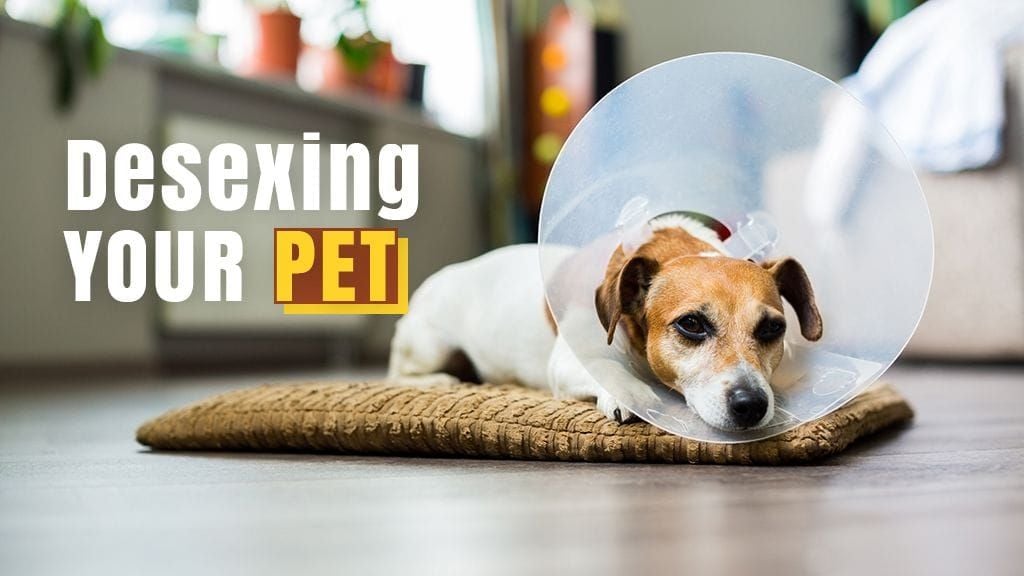All Your Questions About Desexing Your Pet Answered
)
Bringing a new pet into your home is an exciting time, but it can also come with tough decisions—like when and whether to desex your pet. The idea of surgery can feel overwhelming, but understanding the procedure, its benefits, and the aftercare can ease your worries. Desexing is a common and safe procedure that helps your pet live a healthier life while also controlling the pet population.
What Happens When You Desex Your Pet?
Desexing, or sterilisation, is a surgical procedure that stops your pet's ability to breed. For female pets, this prevents unwanted pregnancies, reduces the risk of uterine infections and cancers, and avoids the inconvenience of regular heat cycles. Desexing male pets offers benefits such as reducing aggressive behaviour, roaming, and territorial marking.
In cats, desexing also lowers the risk of diseases like Feline Immunodeficiency Virus (FIV), which is spread through fighting. Overall, desexing can make your pet more content and easier to manage at home.
Why Is Desexing Important?
Desexing your pet is highly recommended for several reasons. Not only does it provide health benefits and behavioural improvements, but it also helps to control the pet population. Uncontrolled breeding leads to overcrowded shelters, and sadly, many animals that don’t find homes are euthanised. Desexing your pet is one way to contribute to reducing this problem, ensuring fewer unwanted animals are born and left without homes.
When Should You Desex Your Pet?
The timing of desexing is an ongoing debate. For dogs, the best age for desexing often depends on their size and breed. Some vets recommend waiting until larger breeds are older, while others suggest desexing smaller dogs earlier. The decision should be made in consultation with your veterinarian, who can give specific advice based on your pet's health and development.
Cats are typically desexed between 4 and 6 months of age, but again, it’s important to have a discussion with your vet to determine the right time for your cat.
What Does the Desexing Procedure Involve?
The desexing procedure is performed under full anaesthesia. For male pets, desexing involves castration—the removal of both testicles. In female pets, the procedure involves removing the ovaries and uterus through a small incision in the abdomen.
While desexing is generally considered safe, any surgery involving anaesthesia carries some risks. However, in most cases, the benefits far outweigh the potential risks, and your vet will take every precaution to ensure your pet’s safety.
What Is the Aftercare for a Desexed Pet?
After surgery, your pet will have a shaved area around the incision site, typically on their belly or near the legs. You may notice some internal or external sutures. It’s crucial to prevent your pet from licking or biting at the incision, as this can cause infection or lead to premature suture removal. An Elizabethan collar, often referred to as "the cone of shame," can be used to stop your pet from interfering with the healing wound.
During the first 5-14 days after surgery, your pet needs to stay calm and rest to ensure proper healing. This can be challenging, especially with young pets, but restricting activity is key to avoiding complications like wound reopening or swelling.
Signs to Watch for After Desexing
While most pets recover smoothly from desexing, it’s important to keep an eye on their recovery. If you notice any of the following symptoms, contact Taringa Vet right away:
- Bruising or discomfort around the incision
- Vomiting
- Broken or removed sutures
- Urinary incontinence
- Swelling around the suture line
- Reduced appetite
- No bowel movements for 2-3 days
Quick action can prevent further complications and ensure your pet’s recovery goes as smoothly as possible.
Conclusion:
Desexing is an essential procedure for many pets, providing both health benefits and helping control the pet population. By understanding the process, its importance, and the proper aftercare, you can make the best decision for your furry family member. If you’re considering desexing your pet or have more questions, don’t hesitate to reach out to our team for expert advice.
To book your pet in for desexing, call us today on 07 3871 3888.
| Tags:DogPet SurgeryClient Information |

